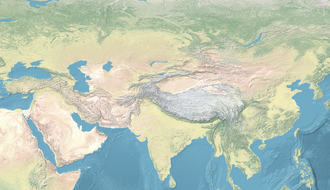| Geographical range | Levant |
|---|---|
| Period | Upper Paleolithic |
| Dates | c. 35,000 – c. 29,000 BP (calibrated) |
| Preceded by | Emiran, Ahmarian |
| Followed by | Kebaran (Epipaleolithic) |

The Levantine Aurignacian (35,000-29,000 BP, calibrated, 32,000-26,000 BP, non-calibrated) [6] is an Upper Paleolithic culture of the Near-Eastern Levant that evolved from the Emiran culture. [6] It was named so because of the similarity of stone tools with the Aurignacian culture in Europe. [6] The Levantine Aurignacian used to be called Lower and Upper Antelian in old sources, from the site of Wadi Antelias in Lebanon. [6] The most important innovation in this period is the incorporation of some typical elements of Aurignacian, like some types of burins and narrow blade points that resemble the European type of Font-Yves.



